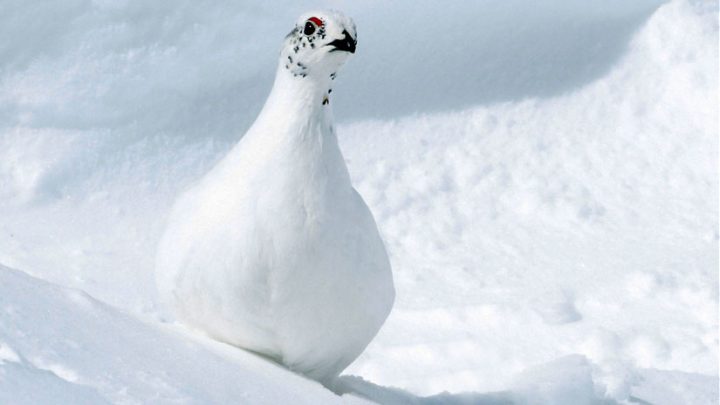Why don’t birds get cold feet?

Actually, songbirds do get very cold feet: the surface temperature of their toes may be barely above freezing even as the bird maintains its core body temperature above 100°F (38°C). But most birds don’t succumb to frostbite because there is so little fluid in the cells of their feet, and their feet are mostly tendons and bones with little muscle or nerve tissue.
Birds also have a countercurrent heat exchange system in their legs and feet—the blood vessels going to and from the feet are very close together, so blood flowing back to the body is warmed by blood flowing to the feet. The newly cooled blood in the feet lowers heat loss from the feet, and the warmed blood flowing back into the body prevents the bird from becoming chilled. And because bird circulation is so fast, blood doesn’t remain in the feet long enough to freeze.
Birds may also alternate standing on one foot at a time, pulling one up into their warm downy feathers, while the other stands in the cold, and then reversing them. And when birds perch they can lower their bodies down to cover their feet, keeping their feet warm with their feathers.
Do cold feet bother birds? It’s hard to say for sure, but we do know that birds like Common Eiders and Snow Buntings have few pain receptors in their feet.

All About Birds
is a free resource
Available for everyone,
funded by donors like you
American Kestrel by Blair Dudeck / Macaulay Library
